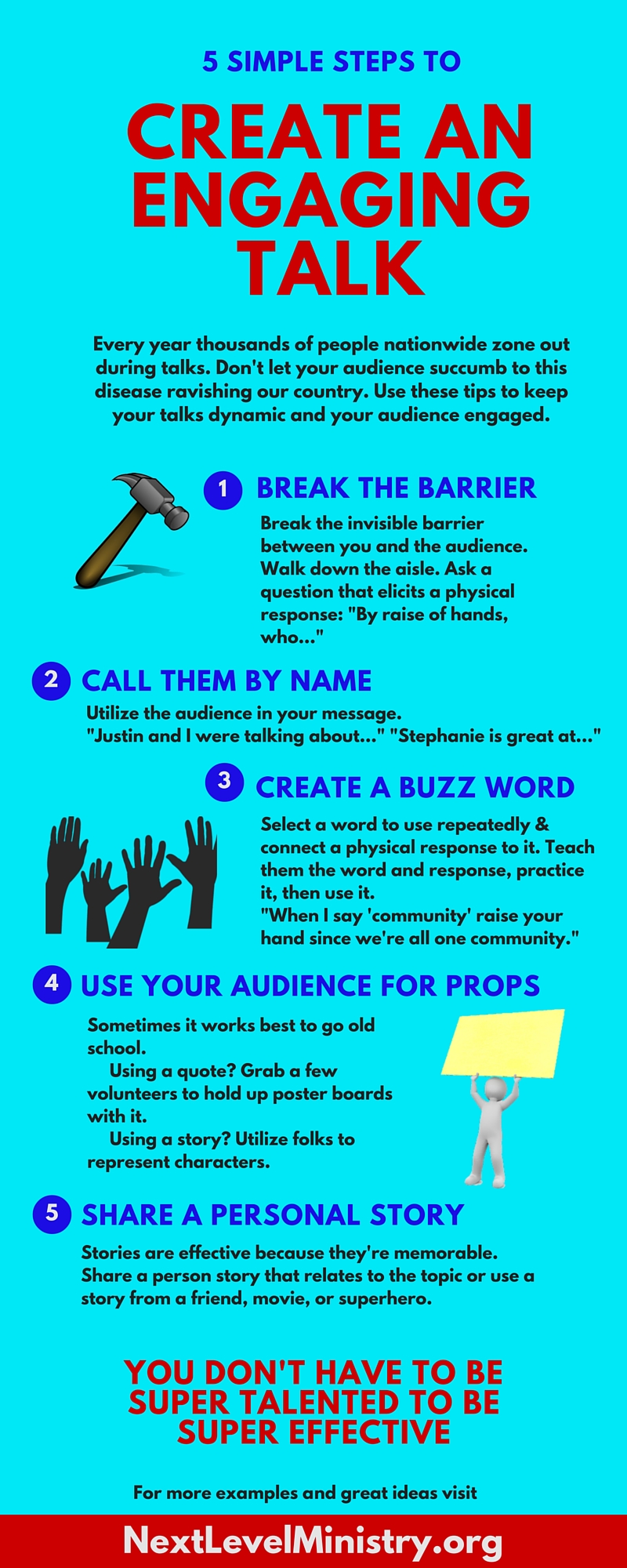You’ve worked on your talk for weeks in prayer and preparation. You’re excited to deliver the Truth of Christ to the youth. Then, as you’re passionately speaking, you look out to see a room filled with glazed over eyes.
They have completely checked out.
We’ve all been there.
Here’s 5 ways to keep your audience engaged in your message.
1. Break the Barrier
Start by breaking the invisible barrier between you and the audience. If you can, walk up and down the aisle. Ask the audience a question that will elicit a response:
“By raise of hands, who has a favorite sports team?”
“How many sacraments do we have? Let’s say it together.”
2. Call Them By Name
Utilize the audience in your message. When you call someone in the audience by name it causes the youth to refocus and sends a surge of energy through them because they might be called on next.
“Justin and I were talking about…”
“Stephanie is great at this. Whenever she…”
3. Create a Buzz Word and Connect a Physical Response
When teaching about salvation history one of my volunteers began his talk by emphasizing the point that we’re all one community. He attached the rule that whenever he says “community” everyone should raise their hand since we are one community. He tested the youth on it a few times then had “community” peppered throughout the rest of his talk. It worked wonders! This talk was over 2 years ago and the youth still raise their hands every time someone says “community”.
4. Use Your Audience for Props
Youth are accustomed to the latest videos and presentations, but sometimes it works best to go old school.
Have a phrase you want to emphasize? Use a few youth to hold up the poster boards.
Talking about certain characters in Scripture? Call some youth by name and have them hold a sign with their character’s name in the front.
We recently did a session on virtues and vices. So we had the youth create a space for a boxing ring in the middle of the audience then had a one youth wear white boxing gloves (playing the virtue) and another wear red boxing gloves (playing the vice). We had volunteers holding the names of the virtue/vice over each boxer. The emcee gave a moral scenario while the boxers sat in their chairs in each corner, then declared which boxer won and why. It was successfully interactive, engaging, and catechetical!
5. Share a Personal Story
Think about the last homily you remember. What do you remember about it? For most people they remember a story that was shared. There’s a reason that Jesus taught with parables so often…because stories are effective!
When you share a personal story or testimony the youth will immediately become more engaged and even begin to trust you more since you are being vulnerable and trusting them.
Don’t have a personal story that relates? Then use a story of a friend, from a book, or even from a movie. There’s a plethora of superhero stories that we can pull from and, of course, a slew of examples from the lives of the saints.
It is truly a privilege to share with youth the Gospel message. That’s why it’s our responsibility to be prepared and not just show up and “allow the Holy Spirit to do His thing”. The Holy Spirit is more than willing to inspire you during your time of preparation. Remember, our God is a God of order and His beloved children deserve to have their speaker be prepared, while still allowing the Holy Spirit to move through you during your talk.
You don’t have to be super talented to be super effective.

